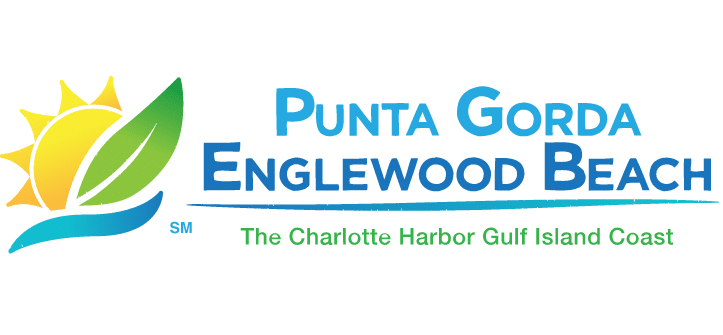Destination Feature: Greece

GREECE
Where will your customers be going next? With independent travel on the increase, guidebooks are becoming a ‘must have’ for tourists on both long and short haul trips. Each month on TravelMole, the travel experts at Lonely Planet profile one of the world’s top destinations…
General Information:
Having exported chaos, drama, tragedy and democracy before most nations stayed up late enough to want souvlaki, Greece boasts a legacy that’s unrivalled. From smoggy Athens to blindingly bright islands, there are more ancient fragments than you can shake a stick at. But don’t expect a visit to Greece to be a sober study of the ancient world – the Greek propensity for partying dates back to Dionysus.
Greeks are fierce guardians of tradition, but that doesn’t mean they don’t know how to have fun – their propensity for partying dates back to Dionysos. In addition, hot sun and limpid seas conspire to make Greece a compelling place to relax. Whether you’re supping in a beachside taverna, sipping coffee in a shady plateia or disco-dancing till dawn, chances are the gods already have you ensnared.

Destination Facts
Full country name: Hellenic Republic
Area: 131,944 sq km
Population: 10.3 million
Capital city: Athens (pop approx. 3.7 million)
People: 98% Greek with minorities of Albanians, Turks and Slavic-Macedonians
Language: Greek
Religion: 98% Greek Orthodox, 1.3% Muslim, 0.7% other
Government: parliamentary republic
Prime Minister: Kostas Simitis
Economic facts
GDP: US$143 billion
GDP per head: US$14,000
Annual growth: 3.5%
Inflation: 2.6%
Major industries: tourism, shipping, food and tobacco processing, textiles, chemicals, metal products, mining, petroleum products
Major trading partners: Germany, Italy, France, UK, USA
Member of EU: yes
Euro zone participant: yes
Travel facts
Visas: nationals of Australia, Canada, Cyprus, EU countries, the European principalities of Monaco and San Marino, Iceland, Israel, Japan, Malta, New Zealand, Norway, Switzerland, the USA and most South American countries are allowed to stay in Greece for up to three months without a visa; most others can enter Greece for up to two months without a visa; Greece will refuse entry to anyone whose passport indicates that, since November 1983, they have visited North Cyprus
Health risks: sunburn, Typhus (rural areas from April to September), Lyme disease, Rabies; codeine, which is commonly found in headache preparations, is banned in Greece and you may face prosecution if you bring it into the country
Time: GMT/UTC +2; +3 during daylight saving time
Electricity: 220V, 50 Hz
Weights & measures: metric
Money advice
Currency: euro (EUR), formerly Drachma (dr)
Greece is no longer dirt cheap. A rock-bottom daily budget would be US$20 a day. You’d be hitching, staying in youth hostels or camping, staying away from bars, and only occasionally eating in restaurants or taking ferries. Allow at least US$40 per day if you want your own room, plan to eat out regularly, and intend to see all the sights. If you want a real vacation – comfortable rooms and good restaurants all the way – you will need closer to US$70 per day. Hotel rates vary enormously according to season – you can save as much as 30% if you travel outside high season (mid-June till end of August).
Banks exchange all major currencies in cash, travellers’ cheques or Eurocheques; the commission is lower for cash. Post offices exchange cash but not travellers cheques, and usually charge lower commissions than banks. Travel agencies and larger hotels change cash and travellers cheques but usually charge higher commissions than banks. Banknote exchange machines can be found in most tourist areas. All upmarket shops, restaurants and hotels accept credit cards. Visa, MasterCard (Access) and Eurocard are the most widely accepted. Most banks have ATMs where you can access your debit or credit account.
In restaurants the service charge is included in the bill but it is the custom to leave a small amount; rounding up the bill is usually sufficient. Likewise for taxis – a small gratuity is appreciated. Bargaining is not as widespread in Greece as it is further east. Prices in most shops are clearly marked and non-negotiable, but your haggling skills will come in handy at markets. It’s always worth bargaining over the price of hotel rooms, especially if you are intending to stay a few days.
When to go
Greece has mild wet winters and hot dry summers. Winter temperatures can be severe in the mountains, and even Athens can get viciously cold. Maximum temperatures on the islands hover around 30°C (87°F) in summer, but the heat is often tempered by the northerly wind known as the meltemi.
Spring and autumn are the best times to visit Greece. Conditions are perfect between Easter and mid-June – the weather is pleasantly warm in most places, but not too hot; beaches and ancient sites are relatively uncrowded; public transport operates on close to full schedules; and accommodation is cheaper and easier to find than in the mid-June to end of August high season. Conditions are once more ideal from the end of August until mid-October as the season winds down. Winter is pretty much a dead loss outside the major cities as most of the tourist infrastructure goes into hibernation from the middle of October till the beginning of April. This is slowly changing, however; on the most touristy islands, a few restaurants, hotels and bars remain open year-round.
Events
The Greek year is a succession of festivals and events, some of which are religious, some cultural, others an excuse for a good knees-up. Gynaikratia on 8 January is a day of role reversal in villages in northern Greece. Women spend the day in kafeneia (cafés) and other social centres where men usually congregate, while the men stay at home to do housework. The Greek carnival season runs through February-March over the three weeks before the beginning of Lent, and features fancy dress, feasting, traditional dancing and general merrymaking. Easter is the most significant festival in Greece, with candle-lit processions, feasting and fireworks displays. Emphasis is placed on the Resurrection rather than on the Crucifixion, so it is a joyous occasion. There are numerous summer festivals across the country, the most famous being the Hellenic Festival (mid-June to late September), which hosts drama and music in ancient theatres.
Activities
Greece’s mountainous terrain is perfect for trekking. The countryside is crisscrossed with donkey and goat tracks, and Byzantine cobbled paths link most villages. Although some of the alpine trails are a tad overgrown, most of the popular routes are well maintained. The forested Pindos mountains of Epiros, the Peloponnese and the southwest of Crete are the among the best areas for trekking. The meltemi and the lakelike surface of the Aegean provide perfect conditions for windsurfing, which is the most popular water sport in Greece. Although snorkelling is encouraged and well worthwhile anywhere along the coast, scuba diving is strictly forbidden, unless under the auspices of a diving school, so that underwater antiquities are protected from pilferers. Greece is one of the cheapest places in Europe to go skiing and has around 20 resorts which provide a pleasant alternative to the glitz of the Alps. The most developed resort is on Mt Parnassos near Delphi.
Athens ranks with Rome and Jerusalem for its glorious past, yet few fall in love with the modern city. Most visitors never see beyond the nefos (smog) and the high-rise apartment blocks built hurriedly to house the refugees who poured in from Asia Minor during the 1923 population exchange with Turkey. But beyond the off-putting veneer of concrete there is a kind of dilapidated charm. Almost every house and apartment has a balcony bulging with geraniums, and many of the city’s streets and squares are fringed with orange trees. Athens is a curious blend of east and west; its raucous street vendors and colourful markets are reminiscent of Turkish bazaars, while crumbling neoclassical mansions hark back to the city’s brief heyday as the ‘Paris of the Mediterranean’.

The Cycladic islands epitomise the postcard image of the Greek islands: dazzling white buildings are offset by bright-blue church domes, while golden beaches meet an aquamarine sea. Some of the Cyclades, such as Mykonos, Santorini, Paros and Ios, have vigorously embraced the tourist industry; others, such as Andros, Kea, Serifos and Sikinos, are visited infrequently by foreigners but are favourites with holiday-makers from Athens.
Mykonos is the most expensive and heavily visited of all Greek islands. It has the most sophisticated nightlife and is the undisputed gay capital of Greece. Barren, low-lying Mykonos would never win a Greek-island beauty contest, but it does have superb (if crowded) beaches. The town is an enchanting warren of chic boutiques and chimerical houses with brightly painted balconies draped in bougainvillea and clematis; it’s too perfect for some tastes. Santorini (also known as Thira) is regarded by many as the most spectacular of the Greek islands. Thousands of tourists come every year to gape at the sea-filled caldera, a vestige of what was probably the world’s largest volcanic eruption, ever. Despite the crowds who visit in summer, Santorini’s weirdness, apparent in its black-sand beaches and mighty cliffs, holds a distinct allure.
If you want to escape the tourist hordes, Sikinos, Anafi and the tiny islands to the east of Naxos offer some respite.
Greece’s largest island has the dubious distinction of playing host to a quarter of all visitors to Greece. It’s still possible to find some peace by visiting the undeveloped west coast, the rugged mountainous interior and the villages of the Lassithi plateau. Crete was the centre of the Minoan culture, Europe’s first advanced civilisation, which flourished from 2800 to 1450 BC. The palace of Knossos, just outside Crete’s largest city, Iraklio, is the most magnificent of Crete’s Minoan sites. While Iraklio is a modern, wealthy but somewhat charmless city, the other large towns, Hania and Rethymno, are packed with beautiful Venetian buildings. Paleohora, on the southwest coast, was discovered by hippies in the 1960s and from then on its days as a quiet fishing village were numbered, but it remains a relaxing place favoured by backpackers. Many travellers spend a day trekking though the 18km-long Samaria Gorge to get to Agia Roumeli on the southwest coast. Further along the south coast, which is too precipitous to support large settlements, are the villages of Loutro and Hora Sfakion, linked by boat. The climate on the south coast is so mild that swimming is possible from April to November.
 Strung along the coast of western Turkey, the Dodecanese archipelago is much closer to Asia Minor than to mainland Greece. Because of their strategic and vulnerable position, these islands have been subjected to an even greater catalogue of invasions and occupations than the rest of Greece – Egyptians, the Knights of St John, Turks and Italians have all done their bit as conquerors. Rhodes is the largest of the Dodecanese islands and its town is the largest inhabited medieval settlement in Europe. The Avenue of the Knights is lined with magnificent medieval buildings, the most impressive of which is the Palace of the Grand Masters, restored, but never used, as a holiday home for Mussolini. The imposing Acropolis of Lindos shares its rocky outcrop with a Crusader castle above winding streets with whitewashed, elaborately decorated houses.
Strung along the coast of western Turkey, the Dodecanese archipelago is much closer to Asia Minor than to mainland Greece. Because of their strategic and vulnerable position, these islands have been subjected to an even greater catalogue of invasions and occupations than the rest of Greece – Egyptians, the Knights of St John, Turks and Italians have all done their bit as conquerors. Rhodes is the largest of the Dodecanese islands and its town is the largest inhabited medieval settlement in Europe. The Avenue of the Knights is lined with magnificent medieval buildings, the most impressive of which is the Palace of the Grand Masters, restored, but never used, as a holiday home for Mussolini. The imposing Acropolis of Lindos shares its rocky outcrop with a Crusader castle above winding streets with whitewashed, elaborately decorated houses.
Other popular islands in the Dodecanese include Kos, Symi and Patmos. The untouristy islands of Lipsi and Tilos have fantastic beaches without large crowds, and the far-flung Agathonisi, Kastellorizo and Kasos are great places to experience traditional island life. Kasos is a rocky little place just south of Karpathos, populated only by prickly-pear trees, sparse olive and fig trees, dry-stone walls, sheep and goats. If you tell Karpathians you’re off to Kasos, they’ll tell you to take your knitting.
The Ionian group consists of seven main islands: Corfu (also known as Kerkyra), Paxi, Kefallonia, Zakynthos, Ithaki, Lefkada and Kythira. Strung along the west coast of Greece, the Ionian islands are the only group not in the Aegean, and in many ways they are more reminiscent of their close neighbour, Italy. Apart from tiny Meganisi, none are ‘undiscovered’, although, as with all Greek islands, anyone who forays into their hinterlands will be rewarded with the delights of unspoilt villages. Corfu, with its beguiling landscape of vibrant wildflowers and slender cypress trees rising out of shimmering olive groves, is considered by many to be the most beautiful of the Greek islands.
There are seven major islands in the northeastern group: Samos, Chios, Ikaria, Lesvos, Limnos, Samothraki and Thasos. Huge distances separate them, so island hopping is not as easy as it is within the Cyclades and Dodecanese. Most of these islands are large and have very distinctive characters. Samos, the birthplace of philosopher and mathematician Pythagoras, is lush and humid with mountains skirted by pine, sycamore and oak-forested hills. Egg-shaped Samothraki has dramatic natural attributes, culminating in the mighty peak of Mt Fengari (1611m) which looms over valleys of massive gnarled oak and plane trees, thick forests of olive trees and damp dark glades where waterfalls plunge into deep icy pools.
There are four inhabited islands in this mountainous and pine-forested northern archipelago: Skiathos, Skopelos, Alonnisos and Skyros. They are all heavily touristed and expensive. People go to Skiathos for the exquisite beaches and the nightlife; if you’re there for anything else, you’ll probably leave quickly. Skopelos is less commercialised than Skiathos, but is following hot on its trail. There are some lovely sheltered beaches, but they are often pebbled rather than sandy. Alonnisos is still a serene island, partly because the rocky terrain makes building an airport runway impossible. The water around Alonnisos has been declared a marine park and consequently is the cleanest in the Aegean. Every house has a cesspit, so no waste goes into the sea. Skyros is less developed than the other three, designed to attract posers rather than package tourists.
The five Saronic Gulf islands are the closest of all to Athens, and Salamis is virtually a suburb of the capital. Aegina, Hydra, Spetses and Poros are all surprisingly varied in architecture and terrain, but they all receive an inordinate number of tourists and are expensive. Hydra, once the rendezvous of artists, writers and beautiful people, is now overrun with holiday-makers but manages to retain an air of superiority and grandeur. Motor vehicles, including mopeds, are banned from the island: donkeys rule.
There are 44 villages in the region of Zagoria, north of Ioannina. As with many inaccessible mountainous areas in Greece, these villages maintained a high degree of autonomy in Turkish times, so their culture flourished. The houses are built entirely of slate from the surrounding mountains, and the villages, with their winding cobbled and stepped streets, look as if they’ve leapt straight out of a Grimm’s fairy tale. Many of the villages are now sadly depopulated, with only a handful of elderly inhabitants.
Between the Cycladic islands of Naxos and Amorgos there is a chain of small islands variously called the Little Cyclades, Minor Islands, Back Islands and Lesser Islands. Only four of the islands have a permanent population: Donousa, Koufonisia, Iraklia and Shinousa. The islands were densely populated in antiquity, as evident from the large number of graves that have been found, but these days they are inhabited only by a few goatherds and an increasing, though still relatively small, number of visitors attracted to the pristine beaches. The islands have a few domatia (rooms) and tavernas, but don’t expect anything fancy.
Stuck out in the Libyan Sea south of Crete, Gavdos Island is the most southerly place in Europe. Rumour has it that this was the island where Calypso the sea nymph held Odysseus captive on his way home from the Trojan War. The island has three small villages and pleasant beaches, and it is perfect for those craving isolation. There are no hotels but several of the locals rent rooms. Fishermen from Gavdos take visitors to the remote, uninhabited island of Gavdopoula.
Getting there and away
Greece has 16 international airports and has air links to every major city in Europe. In addition, there are direct flights to and from the USA, Canada, Australia and various Asian cities. There are also frequent flights to/from Istanbul and Sofia. Cheap charter flights are available from London, Amsterdam, Frankfurt and Paris to Athens, Thessaloniki and some of the islands. However, conditions apply; if you take a side trip to Turkey you may not be allowed to use the return portion of your charter-flight ticket.
By land, there are road connections from Turkey, Bulgaria, Albania and Macedonia. There are also trains from Macedonia, Hungary, Bulgaria and Turkey. Travelling to Greece on an Inter-rail or Eurail pass does not necessarily entail travel through Macedonia, however, as the ferry-crossing from Italy is often included in the ticket.
There are ferries from Brindisi, Bari and Otranto in Italy, and from various Aegean ports in Turkey. There are also boats from Israel and Cyprus.
Getting around
Olympic Airways operates flights between many cities and islands at about three times the ferry fare. Buses are the most popular form of public transport as the train system is limited and confined to the mainland. People do cycle in Greece, but you’ll need strong leg muscles to tackle the mountainous terrain. An extensive ferry network connects the mainland and islands.
 Copyright © 2002 Lonely Planet Publications
Copyright © 2002 Lonely Planet Publications
 United Kingdom
United Kingdom United States
United States Asia Pacific
Asia Pacific











































BA pilot dies during layover
Dozens fall ill in P&O Cruises ship outbreak
Turkish Airlines flight in emergency landing after pilot dies
Boy falls to death on cruise ship
Protestors now targeting Amsterdam cruise calls